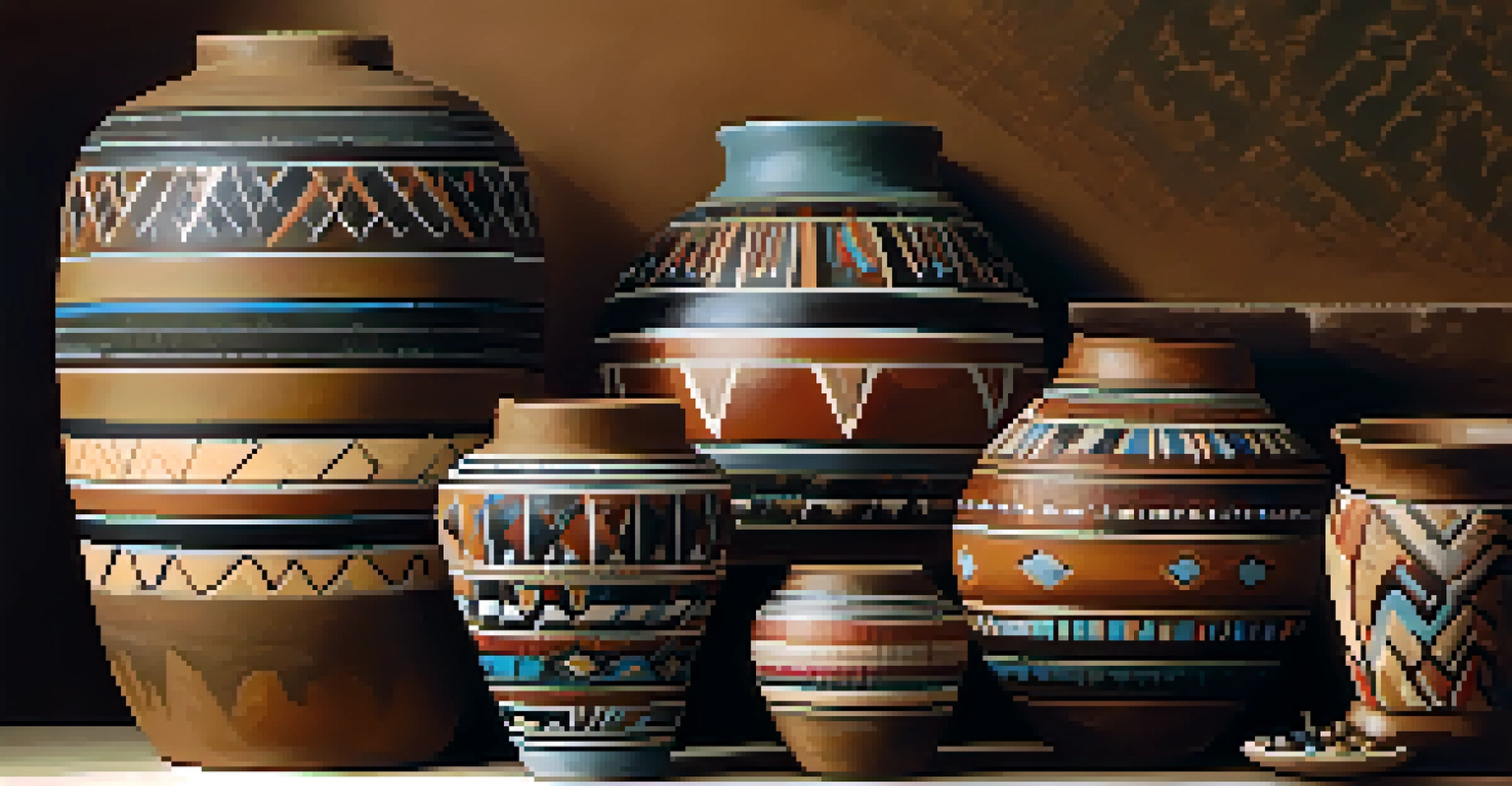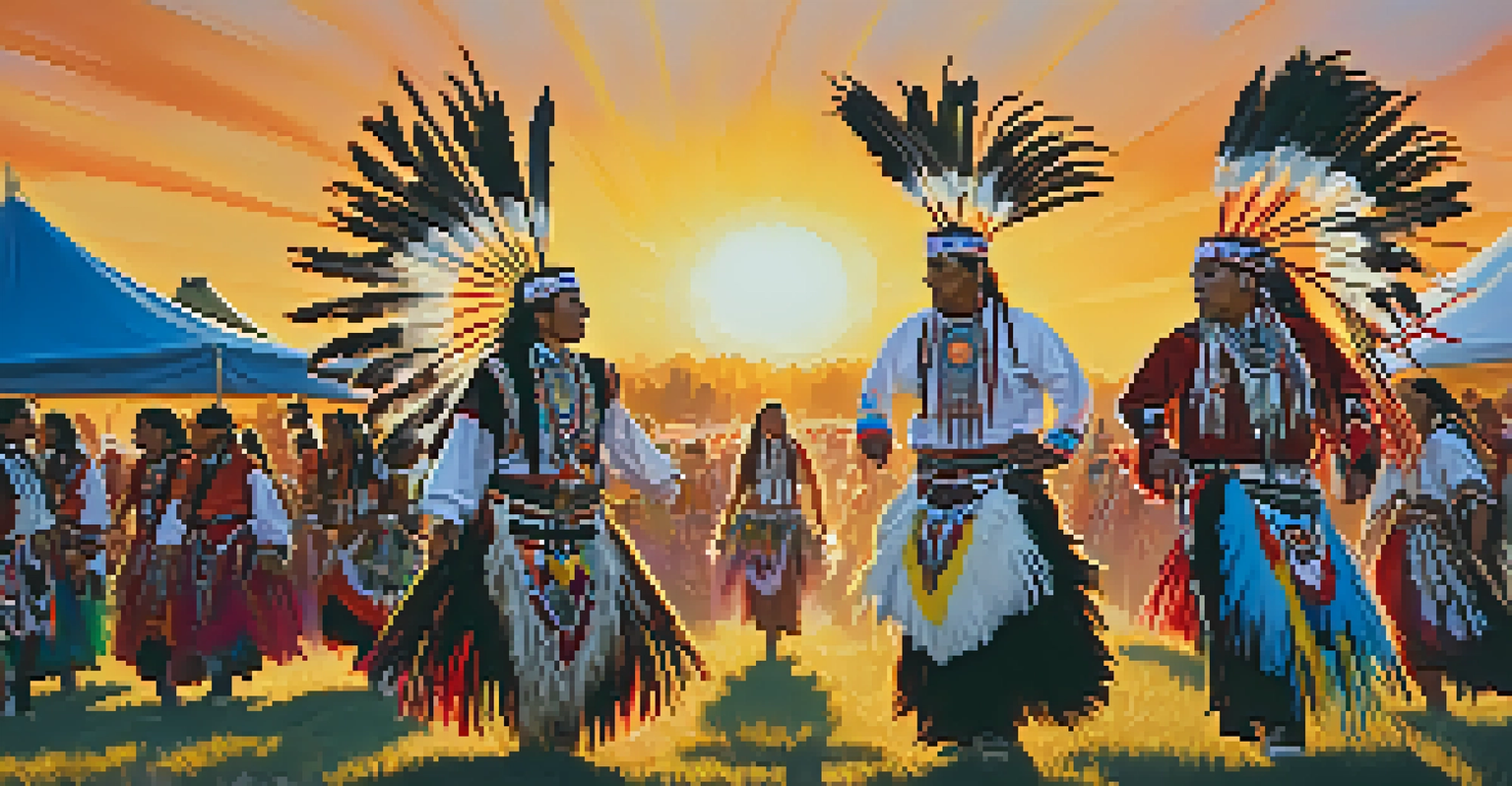The Role of Native Tribes in Utah's Cultural Development

The Historical Presence of Native Tribes in Utah
Long before settlers arrived, Utah was home to diverse Native tribes, including the Ute, Paiute, and Goshute. These tribes have inhabited the region for thousands of years, developing rich cultures and traditions that reflect their deep connection to the land. Understanding their history is crucial to appreciating the cultural tapestry of Utah today.
The preservation of our Native languages is essential to maintaining our cultural identity and heritage.
The Ute tribe, for instance, is one of the most prominent groups in Utah, with a history that intertwines with the state’s identity. Their practices, beliefs, and social structures were shaped by the unique landscapes of Utah, from the mountains to the deserts. This historical presence laid the foundation for the cultural development that followed.
As we delve into the cultural contributions of these tribes, it becomes clear that their influence extends beyond mere history; it is woven into the very fabric of modern Utah. Their stories, traditions, and values continue to resonate, shaping the cultural landscape today.
Cultural Practices and Traditions of Native Tribes
Native tribes in Utah have rich cultural practices that include storytelling, art, and ceremonies. These traditions are not only forms of expression but also serve to pass down knowledge and values through generations. For example, storytelling is a vital way to preserve history and instill cultural pride among tribal members.

Artistic expressions, such as beadwork, pottery, and weaving, also play a significant role in cultural identity. Each piece often tells a story or represents a cultural significance unique to the tribe, making them valuable both artistically and historically. This artistry has increasingly gained recognition in broader markets, showcasing the tribes' heritage.
Rich Native Culture in Utah
Native tribes have profoundly shaped Utah's cultural landscape through their traditions, stories, and ongoing influence on modern society.
Moreover, traditional ceremonies, such as the Sun Dance and Powwows, foster community and reinforce cultural ties. These events serve as reminders of the tribes' resilience and adaptability, allowing them to celebrate their heritage while engaging with the wider community in Utah.
The Language and Communication of Native Tribes
Language is a cornerstone of cultural identity, and many Native tribes in Utah have unique languages that reflect their worldviews. The Ute language, for example, is integral to their storytelling and cultural teachings. However, like many indigenous languages, it faces challenges due to declining speakers and cultural assimilation.
Ecotourism is a way to connect people with nature and culture, fostering respect and understanding between diverse communities.
Efforts are underway to revitalize these languages through education and community programs. Initiatives aimed at teaching the Ute language in schools and community centers are helping to bridge generational gaps. This revival is crucial not just for preservation, but also for fostering a sense of pride and belonging among younger generations.
By learning and using their native languages, tribes can strengthen their cultural identity and ensure that their unique perspectives and stories continue to thrive. This linguistic revival aligns closely with broader efforts to celebrate and integrate Native cultures into Utah’s diverse societal fabric.
Native Tribes' Contributions to Utah's Agriculture
Agriculture in Utah has been profoundly influenced by Native tribes, whose agricultural practices date back centuries. The tribes cultivated crops such as corn, beans, and squash, which are often referred to as the 'Three Sisters.' These crops not only provided sustenance but also demonstrated sustainable farming techniques that respected the environment.
Today, many Native tribes continue to engage in agricultural practices that honor their ancestors' methods. They emphasize organic farming and sustainable practices, contributing to Utah's growing farm-to-table movement. This blend of tradition and modern methods showcases the tribes' commitment to preserving their heritage while adapting to contemporary needs.
Sustainable Agriculture Practices
Native tribes' historical agricultural techniques, such as the cultivation of the 'Three Sisters,' demonstrate their commitment to sustainable farming and environmental respect.
By sharing their agricultural knowledge, Native tribes have positively impacted Utah's food landscape. Their practices encourage a deeper appreciation for local and sustainable agriculture, reminding us of the importance of respecting the land and its resources.
The Role of Native Tribes in Ecotourism
Ecotourism has emerged as a significant avenue for promoting cultural awareness and economic development for Native tribes in Utah. By offering guided tours, cultural experiences, and educational programs, tribes can share their rich heritage with visitors. These experiences often include storytelling, traditional crafts, and insights into tribal history.
Such initiatives not only provide visitors with a unique perspective on Native culture but also allow tribes to generate income while preserving their traditions. Involving community members in these programs fosters job creation and economic sustainability, making ecotourism a win-win for both tribes and the environment.
Furthermore, ecotourism promotes environmental stewardship, as many tribes emphasize the importance of protecting the land and natural resources. This commitment aligns with broader conservation efforts, showcasing how Native tribes can lead the way in responsible tourism and cultural preservation.
Collaboration Between Native Tribes and Local Governments
Collaboration between Native tribes and local governments has become increasingly important in Utah. Such partnerships can help address social, economic, and environmental challenges faced by both parties. By working together, they can create policies that respect tribal sovereignty while benefiting the broader community.
One notable example of this collaboration is the establishment of cultural heritage programs that involve tribal input. These initiatives aim to recognize and celebrate Native contributions to Utah's history, fostering a sense of pride and awareness among residents and visitors alike. This collaborative approach encourages inclusivity and mutual respect.
Ecotourism and Economic Growth
Ecotourism initiatives allow Native tribes to share their heritage while promoting economic development and environmental stewardship.
Additionally, addressing issues such as land rights and resource management is crucial for these partnerships. Open dialogue and cooperative planning can lead to more equitable solutions, ensuring that Native tribes have a voice in decisions that affect their communities and the environment.
Preservation of Native Culture in Modern Times
As Utah continues to grow and evolve, the preservation of Native culture remains a pressing concern. Modernization and urbanization can threaten cultural practices and languages, making it essential for tribes to actively engage in preservation efforts. Initiatives such as cultural centers and language revitalization programs are crucial in this regard.
These centers serve as hubs for education, sharing traditional knowledge, and fostering community engagement. They often offer workshops, events, and resources that promote understanding and appreciation of Native cultures. By making these resources available, tribes can ensure that their heritage continues to thrive in modern society.

Moreover, the involvement of younger generations in these preservation efforts is vital. By instilling pride in their roots and encouraging participation in cultural practices, tribes can ensure a vibrant future for their traditions, allowing them to flourish alongside Utah's dynamic cultural landscape.